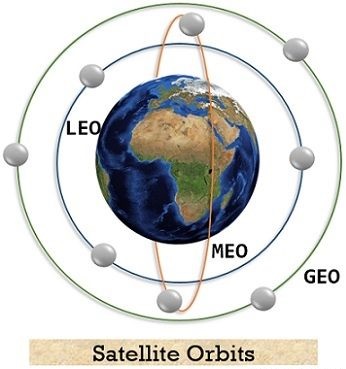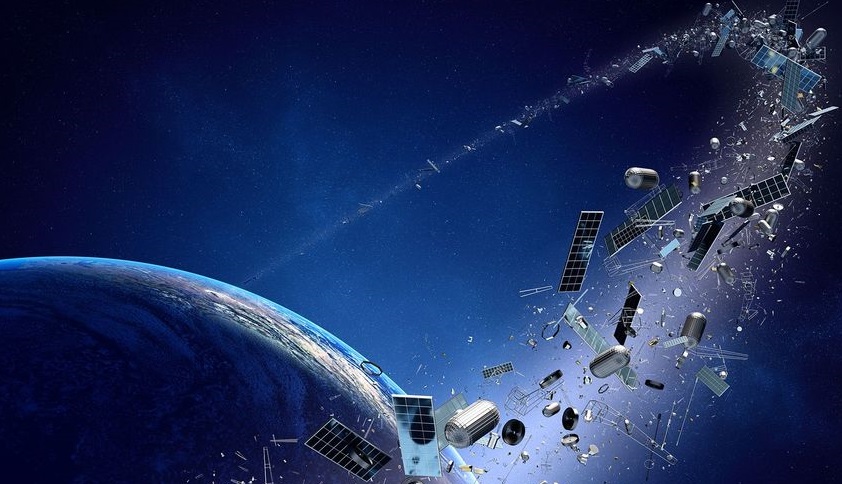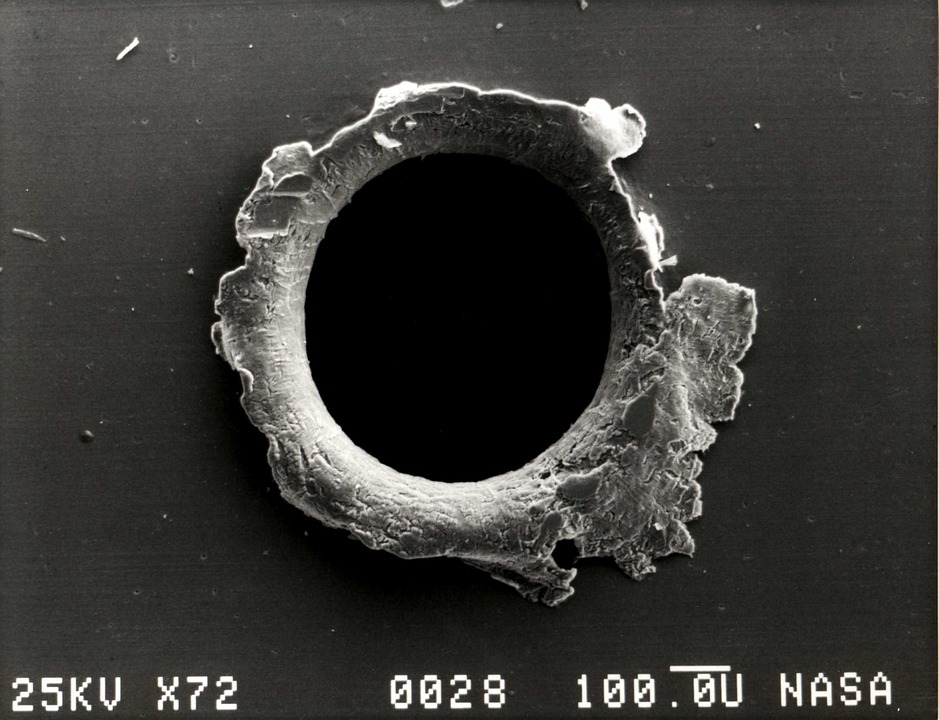Transferring all the junk from Earth to aerospace,
With few traces and no concrete chase.
Endeavoring to alter the world’s harrowing face,
To send out some spacecraft, just in case
Oh dear, that’s what we’re wanted to embrace
To forget all sort of ethics, morality and grace
And let anyone launch their machines, apace.
They commence the race, hasten till they interface
Producing debris, dispersed all over the place
Effacing Earth and unveiling its glum case.

Environmentalists tend to say: it’s high time we saved our one and only planet. Yet, while we’re trying to figure out how to eventually preserve our home, we’re actually starting to threaten our neighbors and surroundings; some alarming hazards have cropped up recently in space and unless we act urgently, they will keep on arising and developing by leaps and bounds.
In fact, endeavoring to come up with cutting-edge and revolutionary technologies and do profound research to capture other lives on other planets (and potential exoplanets), we, humans are potentially not only polluting Earth but also haphazardly contaminating the outer space which is gradually turning into the new “space”-fill. How is that happening though? And how much can it take up?
How are we polluting space?
No sooner has Sputnik 1 successfully been placed in stable orbit back in 1957, than a plethora of government-funded labs, private spaceflight companies and aerospace firms started competing in this newly revolutionizing field to fabricate their own artificial satellite, send it into space and start supervising the whole world from above. It goes without being said that it’s a striking way to gain power, international stature and eventually earn a good remittance out of various collaborations with other corporations and foundations.
This scientific research immensely developing and differently-shaped-and-sized artificial satellites moving around Earth in accordance with preset expectations to take instant pictures of us and help several firms develop and grow more prosperous, the number of those information-collecting machines started gradually skyrocketing from 200 in 1974, according to Statista.com to nearly 6,000 in 2020, and Euroconsult estimates that roughly 1000 will be launched now on every year, meaning there could be 15,000 satellites in orbit, by 2028. Isn’t that crazy? What’s more striking is the fact that it’s far from being the number of the operational ones, actually, around 60% of those are defunct. But why is that?
Understanding the different orbits of Earth
Many wonder how Earth can stand 6000 artificial satellites and eventually more in the future. Machines orbiting around Earth without affecting life on our terrestrial globe or changing some physical laws as they are indubitably voluminous and considerably heavy.
While our planet’s diameter is 12 742km, the largest orbit’s is around 40 000km. However, some of those artificial bodies are nanosatellites (eg. CubeSats) meaning they weigh only a few kilograms and take up a spot as small as one’s palm. With that being said, there is enough room for an enormous number of satellites and spacecraft to orbit in Space without a single problem. But is it always the case?

Actually, there are two types of orbits: the elliptical and circular ones. This slight difference serves to allow different ways of orbiting Earth depending on the satellite’s main use and purpose. The circular one is divided into three parts, the closest to Earth being the Low-Earth Orbit (LEO) which is about 1,000 km above sea level, the middle one being the Medium-Earth Orbit (MEO) mostly used for navigation sats like GPS and monitoring, and the largest being the Geostationary Orbit GEO that’s primarily utilized for Communication and Weather forecasting purposes.
Wielding a great and remarkably immense space around Earth to control, and knowing that everyone is entitled to send into orbit anything they want with few to no regulations, some people think there is no need to worry about launching more and more satellites, as “the more the merrier”, and that this constitutes an enhancement to both scientific and technological fields. But to what extent can Earth bear with these increasing polluting metal objects for long?
Why are satellites considered polluting?
As no institution makes sure we are preserving the space from being befouled, there have been many trials to send out some spacecraft without thoroughly verifying whether or not they properly function or are adequate to operate within the norms beyond the Kármán Line (100km above sea level). As a result, once outside of Earth’s atmosphere, it turns out that many are dysfunctional. Imagine all that effort and money put into the manufacturing of such an idealized machine going in vain, more precisely, going to adding metal trash in outer space. That’s unfortunate!
Another reason why a satellite goes inoperational is due to its tilt from the orbit, thus, its inability to be commanded from Earth and/or to send back signals (which is quite rare as scientists make sure that it’s launched at the best speed and to the right direction/spot ). But does a non-operating satellite remain moving around our planet there forever without being useful to humans? The answer is a plain YES.
Well, due to Earth’s gravity, those flying objects remain in the same orbit especially if they are in LEO; nimbly moving around at a pace of 15,000 mph. Can you imagine having a space filled with non-operating satellites that can never be removed? Apparently, that will be our inevitable destiny. Most of those metal objects rust due to oxygen in space, however small its rate is up there, and some start extracting which leads this debris to come into contact with either other operational satellites or junk and exploding right away, creating thus more debris, which leads to more explosions. We’re, indeed, trapped in this vicious circle that NASA referred to as the Kessler Syndrome, and this collisional effect, according to many astrophysicists, will lead some orbits (particularly LEO) to be impractical for further scientific research.
And unless we change something, those explosions will occur even more often soon, and we’ll have to accept the future consequences. But how about we acted while the ball is still in our court?
What should one do to put an end to this problem?

Despite having had a UN treaty on the peaceful uses of outer space since 1967, you could say we haven’t yet learnt how to be peaceful in outer space.
Alice Gorman, Dr Space Junk vs The Universe: Archaeology and the Future
As one can see, many authors and scientists have been condemning humans’ irresponsible behavior and trying to bring into the spotlight the importance of an early act in such a matter, fearing things happen again inside out. We don’t want history to repeat itself; we doubtlessly don’t crave a space as dirty as our Earth while we never wish science to stop advancing nor aerospace companies to launch new satellites solely to replace the broken, exploded older ones because there is too much debris that they can’t function properly. It’s high time we thought about radical solutions to this dilemma.
One of the most innovative ideas was suggested, in 2012, by scientists at the Swiss space centre at EPFL, the Swiss Federal Institute for Technology in Lausanne who thought of sending into space a “janitor satellite” to sweep and permanently remove all the junk, yet, such a revolutionary idea was never executed as a funding issue arose.
In the absence of reactive action, we probably should think of how to not worsen things. It’s, indeed, time to advocate about making space directives and rules more stringent. The UN should regulate this problem by passing laws on thoroughly verifying whether a potential satellite is apt to be launched or can’t be anything but a ticking bomb affecting the other satellites and the world thereof.
IVolunteer International is a 501(c)3 tech-nonprofit registered in the United States with operations worldwide. Using a location-based mobile application, we mobilize volunteers to take action in their local communities. Our vision is creating 7-billion volunteers. We are an internationally recognized nonprofit organization and is also a Civil Society Associated with the United Nations Department of Global Communications. Visit our profiles on Guidestar, Greatnonprofits, and FastForward.


